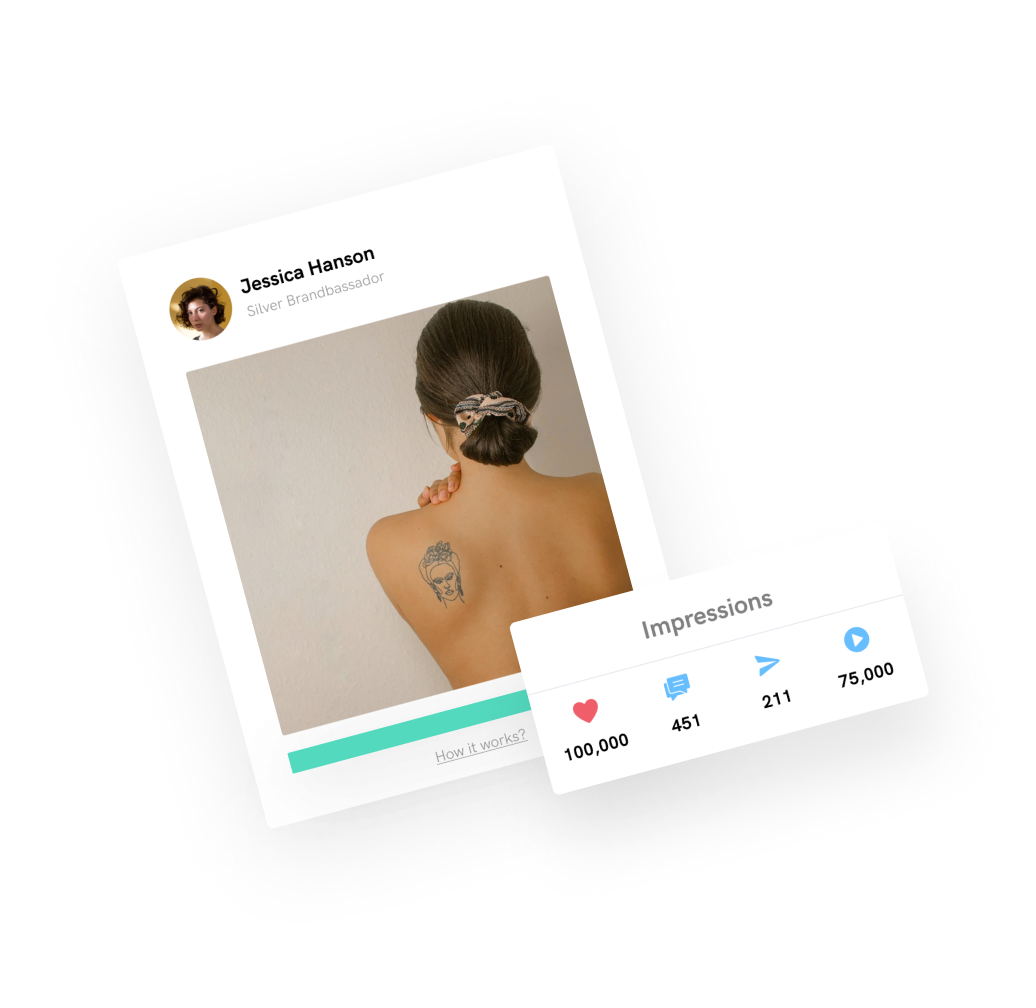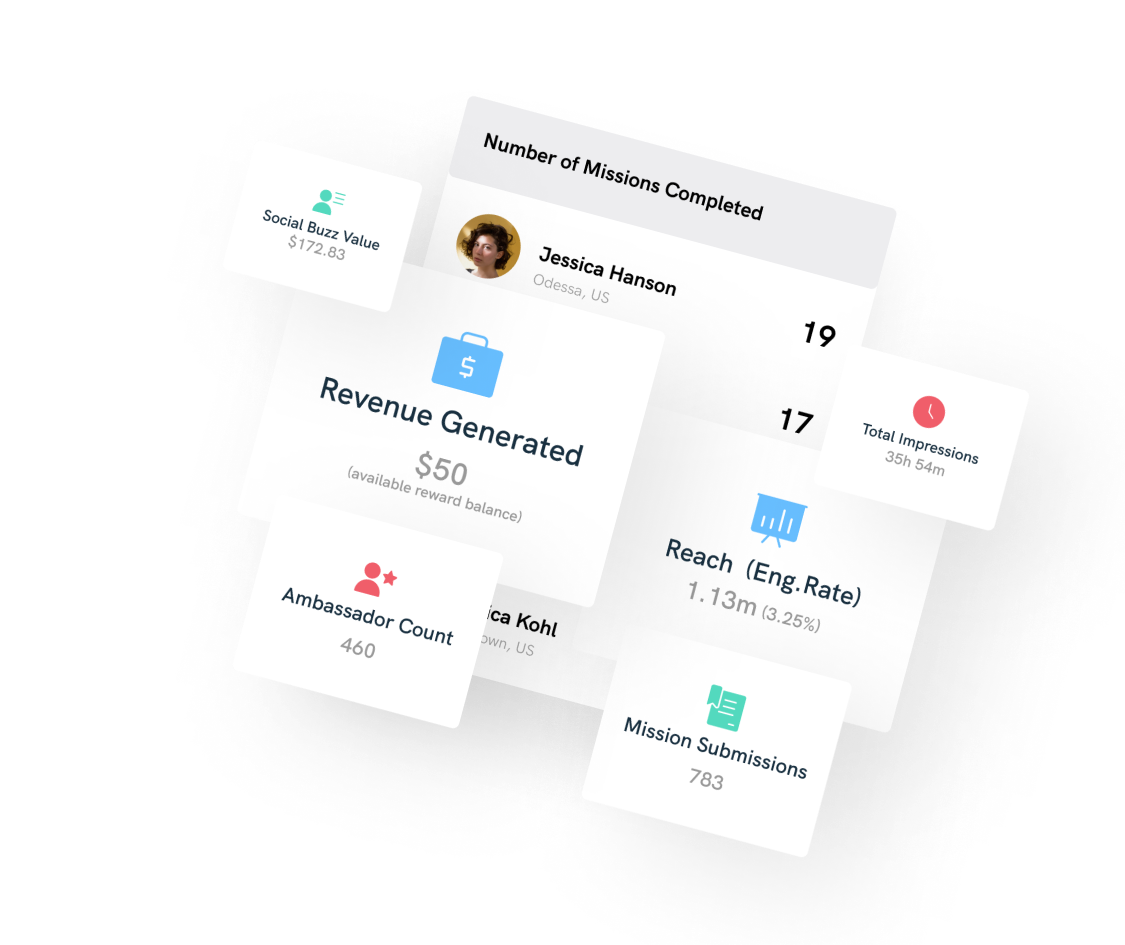Instagram influencers are normally either celebrities, experts, or creatives in a specific field that are relatively well-known and have loads of followers. Micro-influencers, on the other hand, haven’t reached celeb status and rarely have over 15,000 followers. You may think that micro-influencers don’t work for ambassador marketing because of this, but allow us to shatter those perceptions and offer you a complete guide to the wonder of micro-influencer marketing.
The one thing that makes micro-influencers instantly stand out is their ability to truly and consistently engage with their followers. This is something that large-scale influencers can’t always manage. Their following is much larger, so their engagement with actual consumers is way less than it is for a micro-influencer. In our experience, higher engagement rates equal higher sales. Now, we’re not saying we’re experts in maths, but that looks like an equation that’s worthwhile pursuing.
Micro influencer tips for success often revolve around understanding this unique ability to create authentic, personal connections with followers.
Instagram as a platform itself is a great marketing channel as it has created an online space for individual accounts to speak about specific things. The key word here is niche. If you’re a jewellery brand, for example, you’ll find there’s a collective of micro-influencers that only post beauty and fashion content around what they wear, what brands they support, and how they accessorise. Posting outfits and cute fashion finds are an ongoing trend amongst these kinds of influencers and as a jewellery brand, you’ll want to tap into this as a way to feature your products to potential new customers.
In the current digital climate, we’ve reached a stage where traditional advertising is almost dead. Large-scale influencer marketing is nearing a slight halt too. In the past, celebs have endorsed things on Instagram without doing proper research on the brand or the products they’re plugging, which has resulted in some major backlash. This has disrupted trust between consumers and big-name influencers, which is something you won’t find with micro-influencer marketing.
Because of their smaller audience and high engagement rates, micro-influencers are super selective about what brands and products or services they endorse on Instagram. For a micro-influencer, it’s incredibly important to align with a brand when it comes to values. Their products or services need to make sense with who they portray themselves to be on their page, otherwise, it just seems disingenuous. More importantly, it disrupts authenticity. And that’s a key characteristic of micro-influencer marketing that actually guarantees its success - its element of authenticity.
Divain | @_montuorimaria_
When micro-influencers engage with their audience, it feels and looks like someone engaging with their friends. The connection that a micro-influencer crafts with their audience is genuine, so when they recommend a product or service to their followers, it plays out like an ordinary word-of-mouth referral. Currently, this kind of marketing is trusted by consumers more than any other form of marketing. Billboards may be the biggest product or service referrals people see, but it certainly isn’t the most trusted.
5 Tips for Working with Instagram Micro-Influencers
If you’re looking to build some kind of cult-following loyalty around your brand, then partnering with an Instagram micro-influencer is a fantastic way to go. Additionally, leveraging Instagram text to speech feature can enhance your content accessibility, making it easier for followers with visual impairments to engage with your posts and stories.
1. Define What You Want to Achieve
There are several different things a micro-influencer marketing campaign can achieve, ranging from simply building brand awareness to selling a specific product or service. Normally, marketers plan advertising campaigns around a set of goals and with micro-influencer marketing, the same rules can apply.
All you need to do is figure out what you’d eventually like to get from your brand advocates so that you can plan their tasks around what you’d like to achieve. And don’t be shy about it. You can absolutely share with the group of micro-influencers that you team up with that you’d like their upcoming posts to focus on X so that you can gain Y.
If there’s a place to get specific about things, it’s definitely on Instagram. There are little features like tags and hashtags or Reels and Stories that you can all use to your advantage when mapping out the type of content you believe will bring you closer to your marketing goals.
2. Finding the Right Niche Micro-Influencer
In their own unique way, your products or services fall within their own special category. If your brand is food-related, you’ll be able to look for wellness or foodie micro-influencers to partner up with. If you’re in the cosmetics industry, however, a foodie-type micro-influencer isn’t going to help you reach your target audience as much as micro beauty influencers would.
No matter how unique your brand may be, there are niche accounts out there that will align with what you do. After establishing what marketing goals you’d like to achieve, the next port of call is to find social media influencers that will resonate with your brand the best. The danger in not doing so is that you could potentially reach the wrong people.
The best place to search for brand ambassadors is exactly where you know your customers hang out. Send out a call on your socials or in your newsletter. Add a sign-up link to post-purchase emails and add a QR code to your packaging. Meeting your best customers where they're at helps you recruit the right people from the start.
3. Follower and Quality Check
In some cases, influencers aren’t always as influential as they appear to be. There are several online personalities that buy followers or likes, which subsequently minimises their total audience severely.
It’s important to be mindful of this so that you don’t fall into the trap of partnering with micro-influencers that appear to have 15,000 followers, but in reality, only have around 6,000.
It goes without saying that it isn’t always possible to reach an influencer’s entire audience through your marketing campaign, but ideally, you’d like to reach the majority so that their audience ultimately overlaps with yours.
You’ll have to keep an eye on fake influencers in order to avoid falling into this trap.
Inkbox | @ror.ling
4. Compensation
After you’ve found niche micro-influencers that resonate with your brand, make sure you put some incentives in place that will drive their enthusiasm to perform the tasks you assign. This could be anything from freebies or gift vouchers to cash rewards and discounts.
Offering your micro-influencers exclusive rewards for completing a set amount of posts per month or for earning a certain number of sales via a discount code is a great way to keep your micro-influencers motivated and active.
5. Perform Content Reviews
Sometimes, a micro-influencer whose niche really suits your company doesn’t necessarily post the kind of content that will appeal best to potential customers. This is where a sort of performative analysis will come in handy.
By evaluating what kinds of posts earn more engagement, you’ll be able to gauge what kind of niche content from a niche micro-influencer will drive the best results. In your evaluation, you may find that selfies and lifestyle shots perform better than standard product shots. This is something you can take into consideration when deciding who to partner with, as well as when you assign tasks to your influencers.
It will help guide them and set a precedent from the start of what your expectations for the partnership are and what kind of content you’d like to see in terms of quality.
We understand the value of micro-influencers for businesses in the Instagram space. Our ambassador software automates the task of searching for niche influencers, while also providing the means to recruit and activate them as part of a full influencer marketing strategy.








